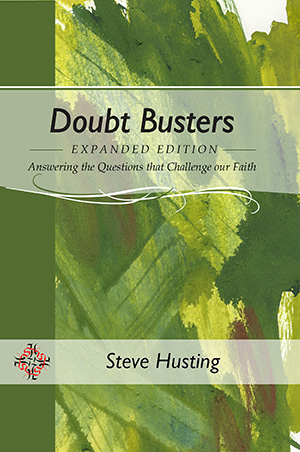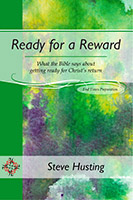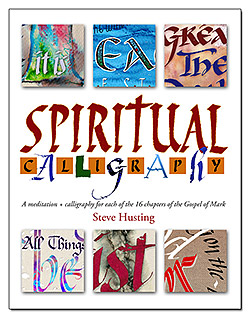In this sign, the raising of Lazarus from the dead is presented simply in two verses, John 11:43-44. But all the preceding verses in the chapter reveal great spiritual depths contained in this brief passage. Jesus raises the dead. In what ways does it affect how we see life and death differently? How does the hope of resurrection affect our viewpoint of living today? If we believe that Jesus as the Son of God will raise us from the dead, how will we see our present life and eternity in a new way? How will our relationship with Jesus change? Will we find new life in His name?
In the verses preceding the miracle, John 11:1-16, we are reintroduced to Mary and Martha. John makes mention of events in other gospels that were already familiar to his readers, particularly Matt. 26:7 (Mary wiping His feet with her hair) and Luke 10:38-42 (Mary and Martha). We are introduced to Lazarus (John 11:1), who is linked to Mary and Martha (John 11:1-3), and linked further to Jesus as acquaintances whom He loved (John 11:5). John acknowledges the gospel accounts that were released before his. All these connections give background about the way the sisters will speak to Jesus as they did. They were not strangers to Him.
Also in this opening section are a few statements from Jesus of interest. Jesus said, “This sickness is not unto death, but for the glory of God, that the Son of God may be glorified through it” (John 11:4), which tells us that He knew in advance of Lazarus’ condition and what He was going to do. The end result will glorify God; that is, the event will greatly honor the Father and, by implication, honor Jesus as the Son of the Father. This is one reason this sign is in the gospel.
Jesus was not in a rush to go and heal Lazarus’ sickness, for after “He stayed two more days in the place where He was” (John 11:6), He told His disciples, “Let us go to Judea again” (John 11:7). The city of Bethany is in the Roman province of Judea, only a few miles (John 11:18) southeast of Jerusalem. But the disciples weren’t thinking of Bethany when Jesus mentioned Judea; they were thinking of what happened in Jerusalem in the previous chapter (John 11:8), where Jesus told the Jews that “I and My Father are one,” and they picked up stones to stone Him (John 10:30-39).
Jesus, going to raise up Lazarus from death, did Himself face death. Isn’t it interesting how John makes interlinks to chapters in his book and the other gospels? It overlays the narrative with richer details, and mixes in memories and emotional connections we made with those earlier episodes. What feelings arise when you think of “Martha, Martha” and how Mary chose the better place at Jesus’ feet? Perhaps subliminally, we’ll recall the story of Lazarus and the rich man and how they were separated in Paradise after death (Luke 16:19-31). Could the Lazarus there refer to the Lazarus in this story? Note the ending of that episode, where Abraham says, “If they do not hear Moses and the prophets, neither will they be persuaded though one rise from the dead.” Were the Jewish leaders persuaded of Jesus when Lazarus rose from the dead? Were they not ready to kill Lazarus to remove the evidence of Jesus’ work (John 11:45-51)?
Welcome to the rich complexity of the gospel of John.
As a side note, when the disciples arrived at Bethany, Lazarus “had already been in the tomb four days” (John 11:17). This is interesting because 1 Cor. 15:4 tells us, “and that He was buried, and that He rose again the third day according to the Scriptures.” Where does the Old Testament say that Jesus would be in the grave three days? Take a look at Psalm 16:10, “For You will not leave my soul in Sheol, Nor will You allow Your Holy One to see corruption.” So someone will not be left in the grave (“Sheol”) and experience decay (“see corruption”). But it doesn’t specifically mention three days. We know from John 11:39 that at four days the body has already begun decomposition: “Lord, by this time there is a stench, for he has been dead four days.” So Jesus rose before decomposition has begun, before the body sees corruption. When linked to John 11:17, it has to be under four days. Hence, three days.
When Jesus arrives, Martha went out to meet Jesus (John 17:20). During their conversation Martha tells Jesus, “Lord, if You had been here, my brother would not have died” (John 17:21). This should reinforce the fact that Jesus could have healed him. When Jesus tells her that her brother will rise again, Martha thinks He is talking about the resurrection of all people (John 11:23-24).
Then Jesus tells her, “I am the resurrection and the life. He who believes in Me, though he may die, he shall live. And whoever lives and believes in Me shall never die. Do you believe this?” (John 11:25-26). Let’s take this apart. “I am the resurrection and the life.” We are accustomed to thinking of this as an event in the future, but Jesus turns it into a Person and a present-day reality.
By implication, if we truly have Jesus, we have resurrection life. Romans 6:1-14 goes into this in detail. Because Christ rose from the dead, so consider yourself “united together in the likeness of His death” as well as His resurrection (Rom. 6:5). We died with Christ and “we believe that we shall also live with Him” (Rom. 6:8). Christ died to sin and lives to God. Therefore we are to consider ourselves “dead indeed to sin, but alive to God in Christ Jesus our Lord” (Rom. 6:11). This resurrection life is a present-day reality for the disciple of Christ who denies himself, takes up his cross, and follows Jesus. When we believe in Him in the sense of identifying with His life, then we’ll know His life as dead to sin and alive to God.
The next part: “He who believes in Me, though he may die, he shall live.” We readily believe this in the sense that there will be a resurrection of all disciples at the close of this age when Jesus comes again. Our bodies will die, but we will rise with new bodies. “So also is the resurrection of the dead. The body is sown in corruption, it is raised in incorruption. It is sown in dishonor, it is raised in glory. It is sown in weakness, it is raised in power” (1 Cor. 15:42-43). Physical resurrection in the age to come is the hope of the Christian.
The next part: “And whoever lives and believes in Me shall never die.” Jesus is fond of switching word senses or meanings in mid-sentence. For example, “Let them alone. They are blind leaders of the blind. And if the blind leads the blind, both will fall into a ditch” (Matt. 15:14). Here, He uses two meanings for “blind.” “Blind leaders” are those who have good physical eyesight but have no spiritual sense of they are doing. Also, “Therefore I speak to them in parables, because seeing they do not see, and hearing they do not hear, nor do they understand.” Jesus switches senses with “seeing/see” and “hearing/hear” in the same sentence. Those who are listening to Jesus’ parables see Him and hear His words, but do not comprehend what they are to do with them. So too, some can read the Bible and go away, not knowing what it has to do with their lives.
So Jesus does the same with “live” and “never die.” “Live” has to do with our physical, conscious living on earth. “Never die” is not referring to the death of our bodies, but our consciousness of never dying on the other side of physical death, for we will immediately be seeing Christ. Consider: “For we know that if our earthly house, this tent, is destroyed, we have a building from God, a house not made with hands, eternal in the heavens” (2 Cor. 5:1). We pass from this body into another. Now link this with Paul’s words, “We are confident, yes, well pleased rather to be absent from the body and to be present with the Lord” (2 Cor. 5:8). Again, our body dies, but we are still alive before the Lord. (See also Luke 20:37-38.)
We who live and believe in Christ, walking in a faith that works in love, will pass through death and into His presence. This is His promise for who persist in faith to death.
Now we come to the last part where Jesus asks Martha, “Do you believe this?” (John 11:26). Let’s be careful not to quickly answer on the basis that it is basic Christian doctrine, that believers will rise from the dead. Jesus is asking if we believe that He is the resurrection. He is the life. Right now. He is asking if we believe in a Person, not an event. What is life to you? Your hobby, your smartphone and social media, career, respectability, good looks and fashion? Can we name our idols that take the place of trusting in Christ? Can we repent and believe that Jesus wants to be our life instead of those things?
Look at how Paul trusted in himself and what he gave up to rest his faith in Christ: “circumcised the eighth day, of the stock of Israel, of the tribe of Benjamin, a Hebrew of the Hebrews; concerning the law, a Pharisee; concerning zeal, persecuting the church; concerning the righteousness which is in the law, blameless. But what things were gain to me, these I have counted loss for Christ” (Phil. 3:5-7).
We will die and appear before Christ. The state in which we die is who we’ll be before Christ. The servant who hid his share of the work appeared before the master as wicked and lazy (Matt. 25:24-30). Paul wanted to be ready, and that meant repenting of whatever is not of the life of Christ. Jesus wasn’t boasting that He was of Israel, or had parents who were both Hebrews. He pointed to His relationship with the Father as what He lived for (John 8:29).
How did Martha respond to His question? She said to Him, “Yes, Lord, I believe that You are the Christ, the Son of God, who is to come into the world” (John 11:27). This is the point and teaching of this sign. Who is Jesus to you, really? If you call Him “Lord,” do you do what He says? If you call Him “Savior,” do you continue in your sins? If you believe that He is no less than the Son of God, you will have life in His name.
At the tomb, Jesus publicly prayed, “Father, I thank You that You have heard Me. And I know that You always hear Me, but because of the people who are standing by I said this, that they may believe that You sent Me” (John 11:41-42). Jesus did not act alone. He was careful to honor the Father in His work. He wanted them to see the fellowship He had with the Father. So we are to believe in the “Son” of God. “Son” is not an alternate name to the name “Jesus.” “Son” refers to Jesus’ relationship to the Father.
We may be like Him. As a matter of fact, the goal of God is that we “be conformed to the image of His Son” (Rom. 8:29). Specifically, we may enjoy the fellowship of the Son and the Father. This is what it means to believe in the Son of God and find life in His name, even as Jesus found life in the Father. Jesus tried to explain this to His disciples in John 14:9-23. The epistle of 1 John goes into this in detail, starting with the first seven verses (1 John 1:1-7).
Disciples are those who go further than those who are merely believing—they aim to live out the life God calls them to. No one can be a disciple of Jesus unless he denies himself, takes up his cross, and follows Him (Mark 8:34). These steps are important, for we have many hindrances that prevent our faith from growing into this fruit of abiding in the Father and the Son. As we crucify them one by one, we join ourselves to Him bit by bit, then He reveals more of Himself to us. More and more until “you will know that I am in My Father, and you in Me, and I in you” (John 14:20). We can “know” this. Jesus prays that we’ll have this reality, “that they all may be one, as You, Father, are in Me, and I in You; that they also may be one in Us, that the world may believe that You sent Me” (John 17:21).
Jesus had prayed aloud in the hearing of the crowd around Lazarus’ tomb, “that they may believe that You sent Me” (John 11:42). Lazarus’ resurrection was a public testimony to Christ. Now He prays the same, that we as the church would die to ourselves and rise again with our new identity in Christ, “I in them, and You in Me; that they may be made perfect in one, and that the world may know that You have sent Me, and have loved them as You have loved Me” (John 17:23). He longs to reveal the bond between the Father and the Son, and it will happen when we as disciples crucify the flesh to love one another as the Father loved the Son. Then the world will know that God sent us, for only God could create that kind of love that flows.
“And truly Jesus did many other signs in the presence of His disciples, which are not written in this book; but these are written that you may believe that Jesus is the Christ, the Son of God, and that believing you may have life in His name” (John 20:30-31).




